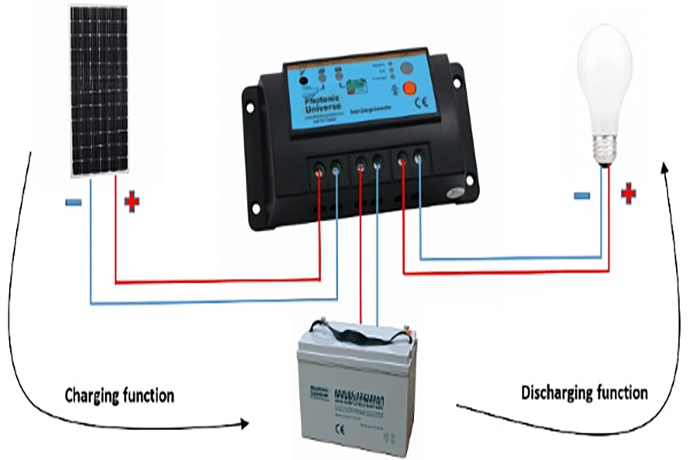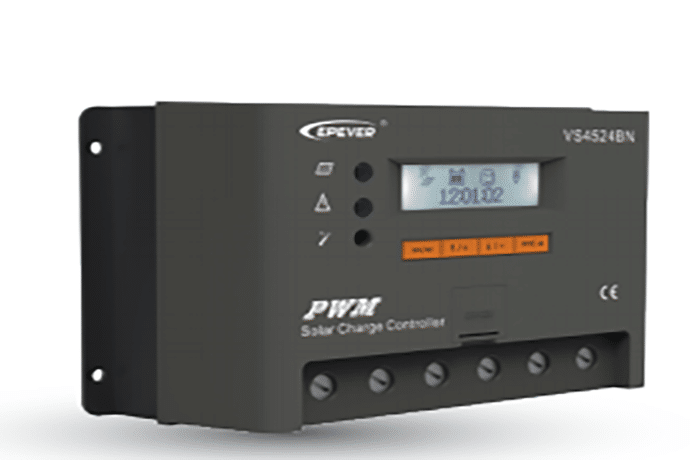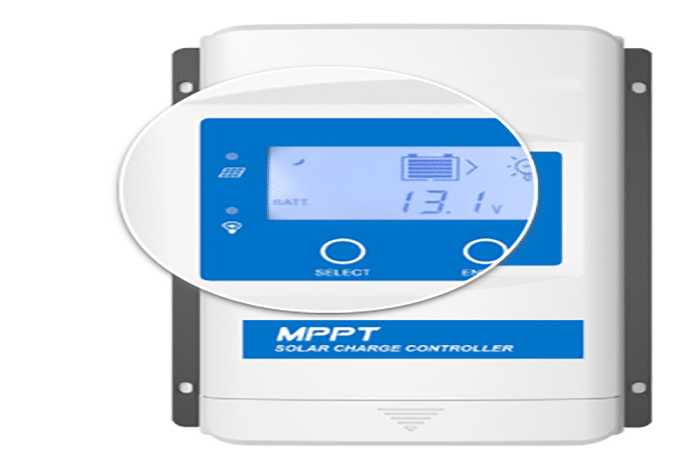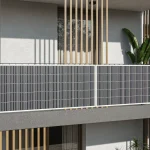To protect the battery and prevent overcharging, most solar power systems include a charge controller, whose most basic function is to cut off the charging current when the battery is full. Because of the different charging characteristics of various batteries, the appropriate charge controller should be selected according to the type of battery.
A solar charge controller (or regulator, as it is sometimes called) is an important part of every solar charging kit. The main role of the controller is to protect the battery and realize automatic charging.
What a solar charge controller does?
1. Reduce the voltage of the solar pane
Without a solar charge controller between the solar panel and the battery, the panel can generate too much voltage and overcharge the battery, which can severely damage it. Overcharging the battery may cause the battery to explode!
2. Monitor Battery Voltage
The solar charge controller constantly monitors the battery voltage. When the battery voltage falls below a certain level, the controller will disconnect the load from the battery to prevent the battery from draining. A fully depleted battery will lose part of its total capacity. If a load is connected, low voltage can still damage the battery.
3. Stop reverse current at night
The Solar Charge Controller will stop any current flow back to the solar panel at night. This prevents any damage to your solar charging kit.
How to choose a solar charge controller?

Pulse Width Modulation Controller
This is an excellent small device with compatibility, simplicity, and a practical understanding of solar panels, batteries, and loads: it is included in most of our small and medium-sized kits. Because it uses PWM technology, current and voltage losses between the panel and the battery are reduced to almost zero. It extends battery life and protects against overcharging, undercharging, short-circuiting, and overheating.
The solar charge controller does not have to be used for one panel and one battery separately; the 10A PWM controller is used to regulate the charging of parallel solar panel arrays with a total power of 160W. If you were to get the 20A PWM controller, you would be able to regulate solar panel arrays up to 320W for 12V batteries and up to 640W for 24V batteries.
The PWM controller can also be used to connect a solar panel to a 12V battery bank. The PWM controller can also be used to connect a solar panel to a 12V battery pack, provided that the batteries are of the same size and in suitable condition.10A controller is also very compact, measuring only 14 x 7 cm.
Controller with LCD
Programmable features allow the user to customize the charging process by setting the battery type and capacity, selecting the charging voltage for each stage, setting protection parameters, and switching the load on and off via timers.
These solar charge controllers put the power in the hands of the owner and make solar circuits more advanced and controllable. The LCD provides you with a lot of information, including Solar panel current/voltage, battery voltage, and battery power:
– Solar panel current/voltage, battery current/voltage
– Battery state of charge
– Air temperature
Users can choose and buy according to different needs. This series controller adopts an MPPT control algorithm to minimize the maximum power point loss rate and loss time, which guarantees the maximum power point tracking efficiency, the corresponding speed, and the DC/DC conversion efficiency of high and low power segments, all of which are capable of tracking the maximum power point of the PV array and obtaining the energy from the solar panels.
Meanwhile, it has the dual functions of charging current limitation and power limitation, as well as a high-temperature charging automatic power reduction function, which fully guarantees the system stability of the product in accessing the excess PV modules as well as the high-temperature operation environment.
Solar controller with digital circuit control adaptive three-stage charging mode, to extend the life of the battery, improve system performance, and has over-charging, over-discharging, PV and battery reverse connection and other perfect electronic protection functions, so that the solar energy power supply system is safe, stable, and long-lasting operation. It can be applied in many fields such as RV, household systems, and field monitoring.
Dual Battery Controller
This can be used to monitor and regulate two independent (electrically isolated) batteries simultaneously. Designed with CNC technology, a dot-matrix LCD, and fully automatic operation, it is suitable for small to medium-sized off-grid photovoltaic systems with real-time power statistics.
It is an essential product for anyone wanting to charge both leisure and engine batteries at the same time, or for anyone wanting to charge a group of 12V leisure and starter batteries at the same time.
The user has two charging options: charge both connected batteries at the same rate, or give one battery charging priority (e.g. 80% of the charge is used for the engine battery and 20% for the leisure battery). The controller can be equipped with a remote display to give the user greater control over the regulation between the two batteries. Although called a ‘dual battery controller’, it can also be used to charge one battery – a second battery can be added later.
Waterproof Controllers
Designed for wet environments, these controllers are almost identical in function to the standard 10A PWM controller. With a variety of timer-controlled load duty settings, it’s perfect for anyone wanting to install a solar charging kit on their boat.
It supports battery and lithium battery types, with RS485 waterproof communication interface to view and modify the controller’s working status, an external dedicated IoT module, and with cloud server monitoring software, it can realize multi-machine remote centralized monitoring. Widely used in the field of IOT, field monitoring, and solar lighting lamps.
MPPT solar charge controller
In addition to PWM, there is another solar charge regulation method that is considered to be the most effective: MPPT (Maximum Power Point Tracking).
MPPT systems can reduce the voltage of a panel (or solar panel array) by up to ten times the voltage of the battery to match the voltage of the batteries, without losing any current in the process. MPPT controllers operate more efficiently than PWM controllers; PWM controllers operate at 75-80% efficiency while MPPT controllers operate at 92-95% efficiency.
The MPPT solar charge controller also increases the amount of current flowing to the battery, which may vary depending on weather, temperature, battery state of charge, and other factors.
It has the same protection features as the PWM controller. Our 200W/250W kits include a 20A MPPT controller because MPPT controllers allow the panel to run at maximum level. Some have a built-in LCD that allows you to monitor the charging process.
We hope the above information helps you find the right solar charge controller for your needs, but if you have any questions, please contact Sungold and we’ll be happy to answer them.
Article from: https://www.sungoldsolar.com/
Learn more at Sungold









